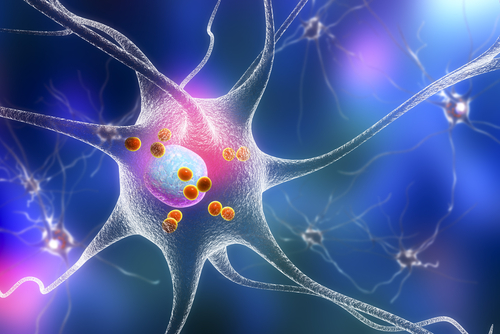Lysosome-targeting Therapies Can Potentially Reverse LRRK2 Effects in Parkinson’s, Study Suggests

Mutations in the LRRK2 gene, which have been linked to familial Parkinson’s disease, impair the activity of the waste clearance system inside nervous brain cells, contributing to their progressive degeneration, a study finds.
Using a compound called clioquinol, researchers could restore the activity of lysosomes — the core centers of waste degradation — that was blocked by mutated LRRK2. This finding highlights the potential for lysosome-targeting therapies as a strategy for treating people with Parkinson’s and other neurodegenerative disorders.
The study, “LRRK2 interacts with the vacuolar-type H+-ATPase pump a1 subunit to regulate lysosomal function,” was published in the journal Human Molecular Genetics.
Parkinson’s is a chronic and progressive neurodegenerative disease caused by the loss of dopamine-producing neurons in the substantia nigra, a brain region involved in the control of voluntary movements. It remains unclear why this particular group of brain cells is more sensitive, but researchers believe that the cells’ death is due to the accumulation of toxic protein aggregates.
Recent findings suggest that lysosomes, special compartments within cells that digest and recycle different types of molecules, may play a role in this mechanism of protein buildup. When the lysosomes don’t function properly, waste accumulates inside cells instead of being degraded and cleared out.
Increasing evidence also suggests that both genetic and sporadic cases of Parkinson’s are linked to lysosomes malfunction.
One of the most common genetic causes associated with familial forms of Parkinson’s are mutations in the leucine-rich repeat kinase 2 gene, known as the LRRK2, which provides instructions for making a brain protein called dardarin. Although mutated LRRK2 is believed to contribute to malfunctioning lysosomes, its underlying mechanism remains unclear.
Researchers from the University of Oxford tackled this question, using a genetically modified rat model carrying a mutated version of the LRRK2 gene, called R1441C, which has been found in human patients.
They analyzed the rats’ neurons — including the dopamine-producing neurons whose loss underlies Parkinson’s — and found that the R1441C mutation prevented the binding of LRRK2 to a lysosomal protein called vATPase a1. This protein has the particular role of regulating the acidity inside lysosomes that is necessary to degrade cell waste.
To further confirm the association between mutated LRRK2 and lysosome impairment, the team treated nerve cells with clioquinol, a compound previously reported to modulate lysosomes acidity by regulating the levels of vATPase. Treatment with clioquinol reversed the effect of the LRRK2-R1441C mutation in lysosomes, and restored the activity of the cells’ waste disposal system.
“Our work identifies for the first time the very important role of LRRK2 in regulating the acidity and the normal function of the protein recycling centre, the lysosome, and identifies a new way to target this therapeutically in Parkinson’s,” Richard Wade-Martins, PhD, professor of Oxford’s department of physiology, anatomy and genetics (DPAG), and the study’s senior author, said in a press release.
“The demonstration that small molecules which directly target lysosome dysfunction, such as clioquinol, have potential therapeutic benefit for Parkinson’s disease, fits closely with the emerging consensus from genetics on this critical area of cell biology,” the researchers said.






